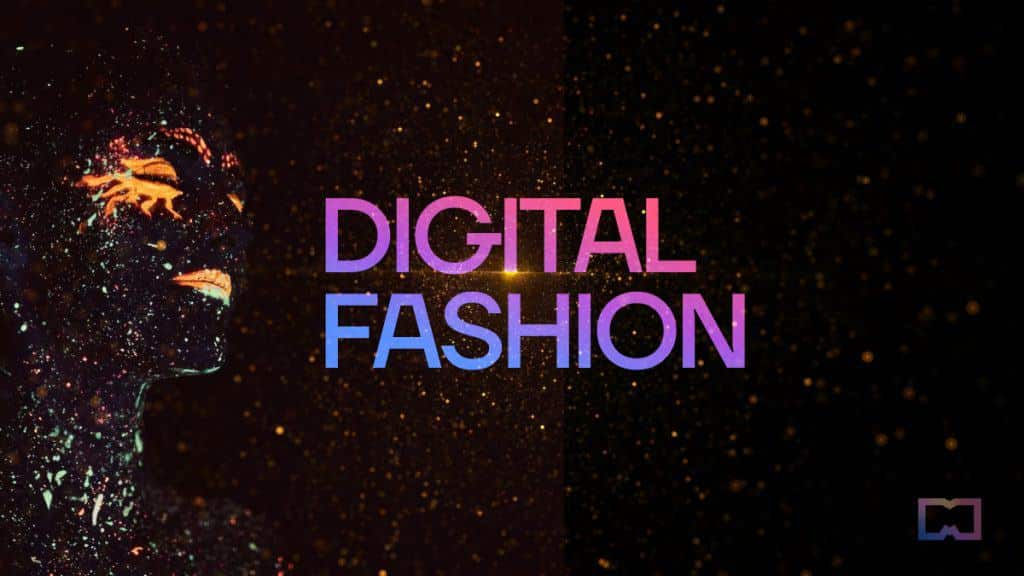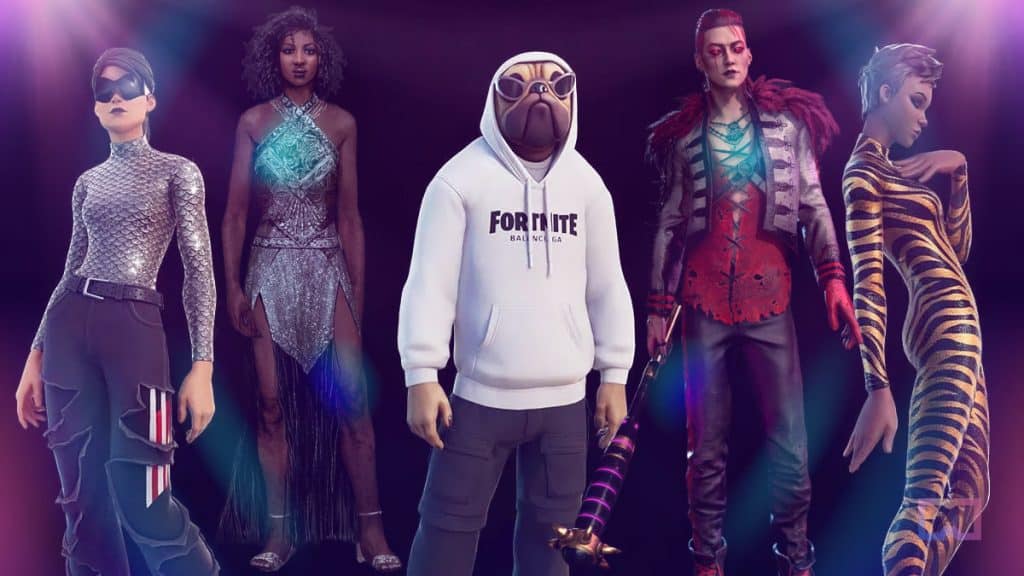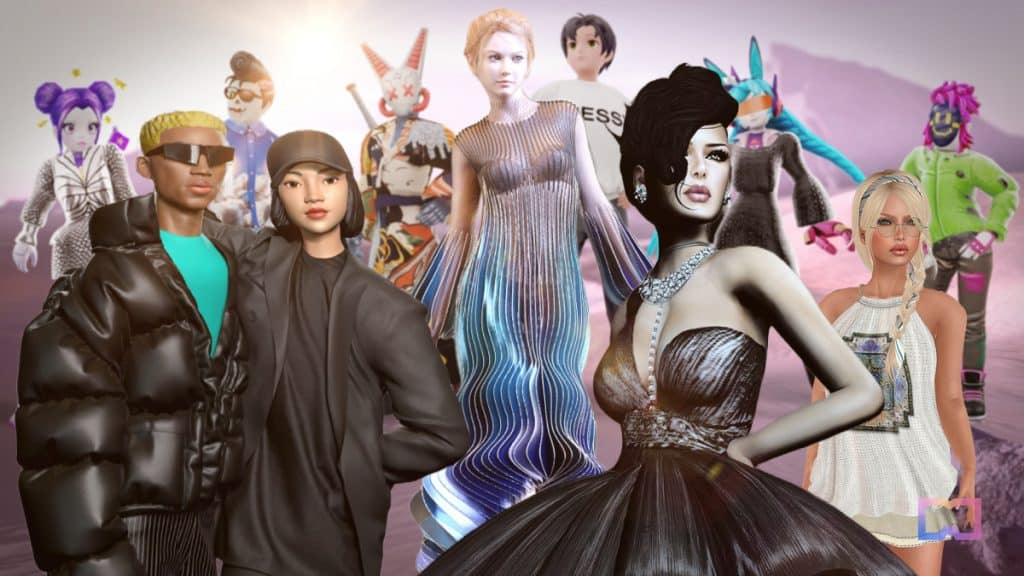The Advent of Digital Fashion
In Brief
The digital fashion sector is on the verge of a significant boom expected by 2028.
The impact of gaming, individual avatars, and virtual products is set to be substantial.
As we navigate through a world filled with billions, the phenomenon of personalization has become a key avenue for consumers to express ownership. This trend has birthed vibrant markets across diverse sectors, enriching those with an insightful perspective on fashion and commerce. Now, this wave is making its presence felt in the online domain.

Back in 2021, estimates valued the digital fashion market at around USD 119.52 million. Experts forecast that this market will catapult to USD 67,635 million by 2028, showcasing an extraordinary compound annual growth rate (CAGR) of 187.6%. This remarkable surge illustrates the burgeoning appetite for virtual apparel and accessories, a trend driven by the convergence of fashion and technology within virtual spaces. As consumers strive to showcase their unique identities, fashion labels are capitalizing on this movement by introducing exclusive digital collections and immersive experiences.
With the escalating popularity of gaming and virtual realms, fashion houses are now innovating by crafting digital attire and accessories tailored for avatars. These virtual garments can be bought and worn solely within online environments, enabling users to display their personal tastes in unprecedented ways.
Digital fashion is firmly anchored in a well-established industry rich with history. At present, it is primarily the major global fashion brands that are delving into this digital space, some experimenting with it as a pilot initiative. This approach is characteristic of any technology in its formative stages. As the digital fashion market further solidifies its position and reveals its potential, it's likely that mid-tier brands will join the ranks and explore the possibilities it offers.
According to Roblox’s recent survey An impressive 66% of Gen Z participants expressed enthusiasm for donning recognizable brand names on virtual items. This statistic clearly indicates that younger generations are eager to find ways to exhibit their favorite brands within digital ecosystems.
The survey findings also highlighted that 48% of Gen Z is keen on trying out unique and unconventional garments in the digital sphere that they wouldn't consider in the real world, presenting an opportunity for digital designers and brands to unleash their creativity. Fashion labels that provide innovative and avant-garde digital apparel are likely to captivate the attention of Gen Z; after all, these outfits are free from the constraints of physical laws and actual materials, granting digital designers creative liberty without limits.
Interestingly, the majority of digital fashion buyers do not necessarily engage with cryptocurrencies, making this market a more inclusive and accessible option compared to digital currencies. The average consumer may prefer testing their new looks using augmented reality (AR) features, enhancing the shopping journey and eliminating the reliance on crypto transactions. By incorporating AR functionalities, digital fashion platforms can attract a wider range of users, including those who may not be familiar with cryptocurrencies.
Gaming: A Revenue Powerhouse
The gaming sector continues to thrive as a multi-billion dollar industry. By the end of 2023, gaming revenues are expected to soar. to reach a staggering US$384.90 billion The captivating nature of video games, coupled with rapid technological advancements, has drawn in a vast audience worldwide. Recognizing this, fashion brands are beginning to see gaming platforms as ideal arenas to present and monetize digital fashion.
Here are a few examples:

- Louis Vuitton x League of Legends: In a unique collaboration with the well-known online game League of Legends, Louis Vuitton designed exclusive outfits for characters and launched a limited-edition collection. This partnership beautifully merges the spheres of high fashion and gaming, appealing to both fashion aficionados and gamers alike.
- Balenciaga x Fortnite: Balenciaga teamed up with the hit game Fortnite to unveil virtual representations of their fashion items within the game. Players had the option to adorn their avatars with Balenciaga’s digital wardrobe, showcasing the brand’s distinct designs to a vast gaming audience.
- The North Face x Pokémon Go: The North Face formed an alliance with Pokémon Go to create real-world fashion experiences that intertwine with the game. They initiated special in-game challenges and designated their physical storefronts as PokéStops, enticing players to visit and engage with their brand.
- Gucci’s Dive into Reality: Gucci launched an innovative interactive experience titled \"Gucci Dive into Reality\" as an augmented reality (AR) game. Participants explored a surreal underwater domain and collected virtual Gucci merchandise, merging the realms of fashion and gaming in a delightful way.
These instances illustrate how fashion brands are leveraging gaming platforms to broaden their reach, connect with style-savvy gamers, and forge unique brand interactions that blend virtual and real-world experiences.
Collaborations between the worlds of gaming and fashion are gaining momentum, giving gamers the opportunity to enhance their avatars with digital clothing, thus fostering a novel arena for fashion expression.
Roblox, a widely-used online gaming platform, has emerged as a vibrant hub for digital fashion enthusiasts. Let's delve deeper into the world of digital fashion on Roblox, examining why players aspire to style their avatars and how this self-expression impacts their overall happiness. We’ll explore how identity plays a crucial role in the purchasing decisions players make and discuss digital fashion's role in empowering users to assert their identities within the Roblox universe.
Avatars: Expanding Applications
Avatars, which are virtual embodiments of users, are making their way beyond gaming into various fields such as healthcare, fashion, and contemporary art. The market for avatars is anticipated to experience substantial growth, with a forecasted growth of $544.87 million projected by 2028, highlighting the rising acceptance and versatility of avatars. In healthcare, for instance, avatars facilitate remote patient monitoring and personalizing treatment plans. Within the fashion industry, they enable consumers to virtually try on outfits and accessories, revolutionizing the online shopping landscape. Additionally, avatars are breaking boundaries in modern art, enhancing creativity and interactivity.

In the Roblox sphere, the act of dressing avatars serves as a potent form of personal expression. According to a recent survey conducted among Roblox users, 47% indicated that styling their avatars is a way to showcase their individuality, reflecting their distinct personalities and preferences. Moreover, 43% reported that dressing their avatars positively influences their mood, revealing the beneficial effects of avatar personalization on emotional well-being. Having the ability to create a virtual persona that resonates with their desired self-image empowers users to solidify their identities in the digital landscape. Identity and the Acquisition of Digital Goods
Research into blockchain technology has uncovered insights related to individuals’ motivations for purchasing digital goods, emphasizing identity as a core factor. In a study with 3,000 participants, 57% declared that their primary motivation for buying digital goods centered around identity. This result reinforces the role of digital fashion as a vital instrument for individuals to cultivate and express their identities in the Roblox universe. By tailoring their avatars' aesthetics through digital fashion choices, users can construct their online presence and foster a sense of belonging and authenticity.
Empowerment through Digital Fashion
Data from Virtue, a marketplace for virtual goods, further affirms that identity expression is a key motivator for acquiring digital fashion items. A study found further evidence that users identified expressing their individual identity as their principal reason for purchasing digital fashion pieces. This underscores the transformative ability of digital fashion, allowing individuals to break free from the confines of the physical realm and explore their personal identities confidently. Through digital fashion, users gain agency, shaping their virtual narratives and contributing to a journey of self-discovery.
The budding number of creators involved in designing digital goods highlights the surging interest in and participation within this innovative sector. The advancement of digital fashion is evident in the fact that platforms like Roblox boast over 200 times more virtual fashion designers compared to physical fashion designers in the United States. This democratization of fashion design is further bolstered by the accessibility of modern technology and the internet, enabling novice creators to stand alongside established brands. The introduction of digital fashion design courses, such as those from the Virtue revealed that 70% of respondents illustrates the demand and recognition of this emerging discipline within the educational landscape. Financially, the creator ecosystem on Roblox has thrived, with earnings skyrocketing and a remarkable increase of $147.1 million in Q1 2022 alone, showcasing the lucrative opportunities that abound for digital fashion creators.
Recent data highlights a 25% increase In summary, the intersection of fashion, gaming, and technology is reshaping self-expression as digital fashion emerges as a powerful medium for creativity and identity formation in virtual settings. As this market continues to evolve, fashion brands are increasingly embracing this new frontier, offering distinctive and inventive digital designs and experiences. University of the Creative Arts The Rise of Virtual Fashion in the Metaverse $539 million in 2021 In a vast world with countless individuals, the trend of personalization is how consumers make products uniquely theirs. This shift towards personalized experiences has fueled growth across various industries, enhancing market dynamics.
Conclusion
FTC's Attempt to Block Microsoft-Activision Merger Fails Date Published: June 05, 2023 at 7:24 am | Last Updated: June 05, 2023 at 7:25 am To enhance the experience in your preferred language, we occasionally use an automatic translation tool. However, please keep in mind that the translation might not be flawless, so exercise caution when interpreting.
The digital fashion sector is projected to undergo significant growth by the year 2028. Prada Timecapsules , phygital clothing , and digital textile printing This evolution will impact gaming, personal avatars, and various digital assets.
In our expansive world, the drive for individualization allows consumers to claim ownership of their choices. This movement has sparked market dynamism in multiple fields, benefiting those with a discerning taste for fashion and entrepreneurship. Now, this trend is making waves in the digital landscape.
It's anticipated that the digital fashion industry will reach a staggering $67.63 billion by 2028. independent designers Back in 2021, the valuation of the digital fashion space was around $119.52 million.
Experts are optimistic, predicting that the valuation of the digital fashion sector will soar to an impressive $67.63 billion by 2028, showcasing a staggering compound annual growth rate (CAGR) of 187.6%. This incredible surge signifies the rising interest in virtual apparel and accessories, propelled by the merging of fashion with innovative technologies and the growth of virtual spaces. As people look to showcase their identities and styles in digital formats, fashion brands are taking advantage of this trend, rolling out exclusive digital collections and immersive experiences.
With the surge in gaming and virtual realities, fashion houses and designers have begun crafting digital garments and accessories for avatars. These virtual assets can be exclusively acquired and displayed in digital realms, empowering users to showcase their unique styles in fresh and thrilling ways. data Digital fashion is grounded in a historically robust industry with deep-rooted traditions. Presently, it is primarily the global fashion giants that are experimenting within the digital fashion sphere, some even treating it as a test run. Such behavior aligns with the typical trajectory we see with emerging technologies. As the digital fashion market begins to mature and reveal its potential, we expect to see mid-tier brands also dive into this exciting opportunity.
A significant 66% of respondents from Generation Z expressed enthusiasm for flaunting brand-name virtual items. This indicates a clear trend among Gen Z, who are eager to represent their favorite brands in digital formats.
About the Author:

Furthermore, the study found that 48% of Gen Z individuals are curious about trying out bold and unconventional clothing in digital realms that they might shy away from in reality. This opens doors for digital creators and brands to innovate freely with fashion. Companies that present unique and avant-garde digital apparel are likely to capture the attention of Gen Z, as these garments are not bound by the physical constraints of real-world fabrics; the possibilities for digital designers are virtually limitless.
Interestingly, the majority of those buying digital fashion items do not necessarily engage with cryptocurrencies, making this a more inclusive and approachable investment compared to the often-complex world of crypto. An everyday individual might want to experiment with new outfits through augmented reality (AR) try-on features that elevate their shopping experience without needing to delve into cryptocurrency transactions. By incorporating AR try-on functionalities, digital fashion platforms can appeal to a wider audience, effectively engaging users who may not be very familiar with cryptocurrency.
The gaming sector remains a powerhouse, evolving into a multi-billion dollar industry, with projections indicating continued growth well into 2023.
The captivating allure of games, paired with technological advancements, has drawn in a substantial worldwide audience. Fashion brands are beginning to recognize the gaming space as a prime platform for showcasing and selling their digital fashion creations.
More Related Posts:
- Louis Vuitton x League of Legends: Louis Vuitton teamed up with the renowned online game League of Legends to launch exclusive outfits for in-game characters, along with a limited-edition collection. This partnership merged high fashion and gaming, appealing to both devoted fashion lovers and gamers alike.
- 10 Best AI Tools for Fashion in 2023
- Digital Avatars
Disclaimer
In line with the Trust Project guidelines Balenciaga x Fortnite: Balenciaga collaborated with the hit game Fortnite to introduce virtual renditions of their fashion collections within the game. Players got the chance to dress their avatars in Balenciaga's digital creations, putting the brand's designs in front of a vast and engaged gaming audience.


